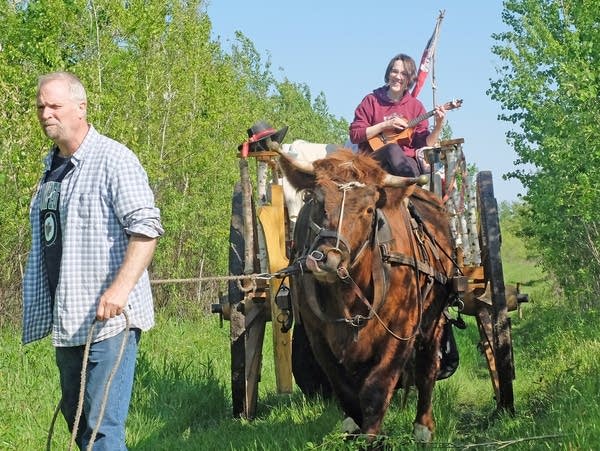Reliving 150-year-old history a step, and a creak, at a time

Terry Doerksen leads Zik down the trail as his daughter-in-law Lindsay rides along playing her ukulele.
Dan Gunderson | MPR News
Go Deeper.
Create an account or log in to save stories.
Like this?
Thanks for liking this story! We have added it to a list of your favorite stories.


